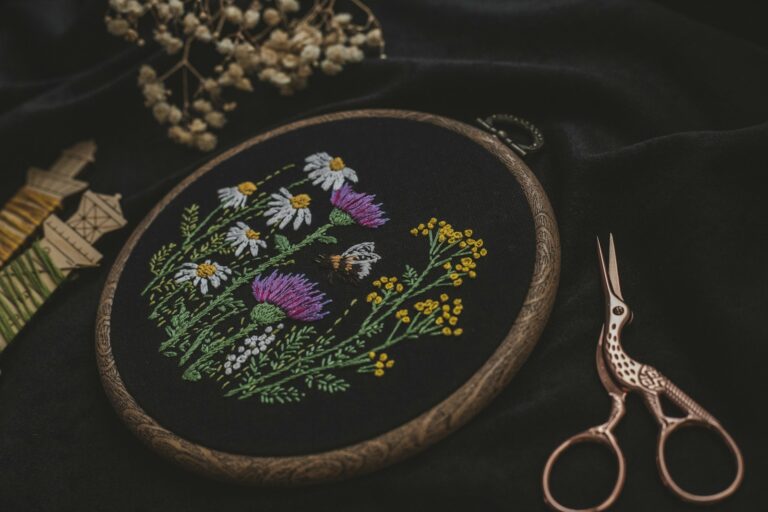Kids today deal with a lot, don’t they? School, friendships, family stuff—it can get overwhelming. Mindfulness activities are a simple way to help children handle all this stress. These exercises encourage kids to pay attention to the present, which really supports their emotional health.
Just a few minutes of mindfulness each day can make a difference. Kids might become a bit more focused, less anxious, and better at handling big feelings. You can weave these activities into your daily routine at home or school. There are plenty of options for all ages, from breathing exercises to movement-based practices.
You don’t need fancy gear or special training to get started. Even something as basic as square breathing or pretending to be an eagle can be done in less than 15 minutes. These fun activities help calm kids down and give them skills they’ll use for years.
Understanding Mindfulness and Its Benefits for Children
Mindfulness teaches kids to notice what’s happening right now, without judging themselves. Kids who practice mindfulness often pay better attention, manage emotions more easily, and connect with others in a healthier way.
Key Concepts of Mindfulness
Mindfulness is all about noticing your thoughts, feelings, and surroundings in a gentle way. For kids, it’s best to keep it simple. You might say, “It’s using your senses to notice what’s happening right now,” or, “It’s paying attention to your breath and body.”
Mindfulness for children should feel fun and engaging. Unlike adult meditation, kids’ mindfulness is usually more active and playful.
A few basics:
- Present moment awareness: Noticing what’s happening now
- Non-judgment: Accepting feelings and thoughts without labeling them
- Gentle attention: Bringing focus back when the mind wanders
Emotional Regulation and Self-Awareness
Mindfulness helps kids spot and manage their feelings instead of being swept away by them. When they practice, they learn to pause between feeling something and reacting.
This is especially useful for kids who struggle with impulse control or anxiety. Mindful practices teach them to recognize emotions as they pop up and decide how to respond.
As kids get better at noticing body sensations tied to emotions—like a tight chest when they’re worried or warm cheeks when they’re mad—they get more space to choose healthier reactions.
Kids who stick with mindfulness often feel calmer and sleep better, which is a nice bonus.
Social-Emotional Skills and Resilience
Mindfulness helps kids build better relationships by improving their listening skills and making them more thoughtful. When kids are mindful, they pick up on what others are saying and feeling.
Studies suggest mindful kids show more kindness and empathy. They can see things from another person’s perspective, not just their own.
Mindfulness activities help kids bounce back from tough times. By accepting hard feelings instead of ignoring them, they build emotional strength.
You can encourage this growth by:
- Doing mindfulness together as a family
- Showing mindful ways to handle stress
- Letting kids talk about all their feelings
- Noticing and praising when they pause before reacting
These skills really stick with kids as they grow up.
Core Mindfulness Activities for Kids
Mindfulness activities give kids tools for focus, awareness, and emotional balance. You can do these at home or in class to help kids be more present and manage their feelings.
Mindful Breathing Exercises
Breathing is the foundation of mindfulness for kids. It helps them settle down when they’re upset or distracted. Square breathing is easy: breathe in for four counts, hold for four, breathe out for four, hold for four.
Belly breathing works well too. Have your child lie down with a stuffed animal on their belly and watch it rise and fall with each breath. It’s a good way to focus on slow, deep breathing.
Some quick breathing ideas:
- Five-finger breathing: Trace each finger while breathing in and out
- Bubble breathing: Pretend to blow bubbles slowly and gently
- Rainbow breath: Lift arms up while inhaling, lower them while exhaling
Start with just a minute or two. As kids get used to it, you can go a bit longer.
Body Scan and Mindful Movement
Body scans help kids notice how their body feels and let go of tension. Guide them to pay attention to each body part, starting at the toes and moving up.
Mindful movement can be as simple as stretching, doing yoga, or walking slowly. It mixes physical activity with paying attention to the present.
Try these:
- Weather report: Ask kids how their body feels (“sunny,” “stormy”)
- Mindful freeze dance: Dance, then freeze and notice sensations
- Animal poses: Do yoga poses like cat, cow, or butterfly
Movement is great for kids who can’t sit still—they learn mindfulness while having fun.
Mindful Listening Practices
Mindful listening sharpens kids’ focus. Have them close their eyes and notice all the sounds they hear for a minute, from nearby to far away.
Sound games are fun too. Ring a bell or chime and ask kids to raise their hands when the sound fades.
Try these:
- Nature sound hunt: Listen for birds, wind, or other outdoor sounds
- Music mindfulness: Listen to a song and pick out different instruments
- Listening walk: Go for a walk and focus only on sounds
Kids usually enjoy these because they turn everyday moments into something special.
Gratitude and Positive Affirmations
Gratitude helps kids notice the good stuff. Start a habit where they share three things they’re thankful for each day. It can be as simple as “my favorite snack” or “playing outside.”
Positive affirmations build confidence. Help your child come up with short, positive phrases like “I am brave” or “I can do hard things.”
Some gratitude ideas:
- Gratitude jar: Write what you’re thankful for on scraps of paper
- Thankful alphabet: Find something to appreciate for every letter
- Kindness notes: Write quick appreciation messages for family
These activities help kids develop a more positive outlook.
Creative and Engaging Mindfulness Practices
Mindfulness doesn’t have to be boring. With a little creativity, these activities can be a highlight of your day and help kids build self-awareness and emotional skills.
Mindful Games and Activities
Games make mindfulness fun. Mindfulness Bingo is easy to set up with tasks like “take three deep breaths” or “notice a sound around you.”
Try Spidey Senses: kids pretend to be Spider-Man and use all five senses to notice their surroundings. It’s a playful twist on the five senses exercise.
A Blindfolded Taste Test turns snack time into a mindful eating activity. Kids slowly taste different foods and focus on flavors and textures. Ask questions like:
- What flavors do you notice?
- How does it feel?
- Does the taste change as you chew?
The Mindful Jar is a classic. Fill a clear jar with water and glitter, shake it up, and watch the glitter settle. It’s a simple way to show how our thoughts calm down over time.
Art and Creative Mindfulness
Art naturally encourages focus. Drawing mandalas lets kids center their thoughts and get creative with patterns.
Try gratitude journaling with prompts like “draw three things that made you smile today.” It mixes art and mindfulness and helps kids notice good moments.
Stone painting is another option. Kids collect rocks and paint them slowly, paying attention to the feel of the brush and the colors.
Cloud watching is both creative and relaxing. Lie outside and look for shapes in the clouds. It’s a peaceful way to practice quiet observation.
Coloring books with detailed patterns work well too. Kids can do this alone or with friends when they need some downtime.
Nature-Based Mindfulness
Nature is perfect for mindfulness. Go on a mindful scavenger hunt and find things to touch, smell, or hear.
Mindful walking is simple. Walk slowly and notice each step. Try walking on different surfaces like sand or grass for new sensations.
During outdoor time, play “Stop and Listen.” When you give a signal, everyone freezes and notices three things they hear, two things they see, and one thing they feel.
Plant a small garden with fragrant herbs or flowers. Taking care of plants teaches patience and helps kids connect with nature.
At the beach or sandbox, run fingers through the sand and make patterns. It’s a calming, hands-on way to stay present.

Implementing Mindfulness Activities at Home and School
Mindfulness can fit into almost any setting, giving kids real tools for emotional health. The best approach depends on age, learning style, and environment.
Age-Appropriate Mindfulness Practices
For toddlers and preschoolers (ages 2-5), keep it extra simple. Try breathing exercises like blowing on a pinwheel or bubbles to practice slow breaths.
Elementary kids (6-10) can handle guided mindfulness activities like:
- Body scans
- Basic yoga poses
- Five senses scavenger hunts
- Short meditations (1-2 minutes)
Middle and high schoolers (11+) can try longer practices:
- 5-10 minute guided meditations
- Mindful taste tests
- Journaling
- Progressive muscle relaxation
Kids’ attention spans are all over the place, so start short and build up as they get comfortable.
Teaching Mindfulness to Kids
Explain mindfulness simply: “It’s paying attention to what’s happening right now with your body, thoughts, and feelings.”
Practice mindfulness yourself—kids notice what you do. Try setting aside a few minutes for a family mindfulness break.
Use props and visuals:
- Glitter jars for busy minds
- Stuffed animals for belly breathing
- Mindfulness worksheets for older kids
For kids with ADHD or behavior challenges, keep sessions short and frequent. Mindfulness apps for kids can add some variety and structure.
Supporting Emotional Well-Being in Different Settings
At home, you might set up a cozy corner with some pillows, a stress ball or two, and a reminder to take a few deep breaths. Kids can head there when big feelings show up, and it gives them a spot to just breathe or chill out for a few minutes.
In the classroom, teachers can sneak in short mindfulness activities between lessons:
- Quick 1-minute breathing breaks
- Some easy stretching or a simple yoga pose
- Listening quietly to a chime or bell
Social-emotional learning fits nicely with mindfulness, too. Try asking kids to check in with themselves: “How does your body feel right now? Where do you notice those feelings?” It’s a simple way to help them notice what’s going on inside.
In therapy or counseling, mindfulness can be a handy tool for coping. Activities like mindful drawing or gentle movement let kids explore emotions and express themselves in their own way.
It’s honestly not about how long you practice. A few minutes every day usually helps more than a long session once in a while.




